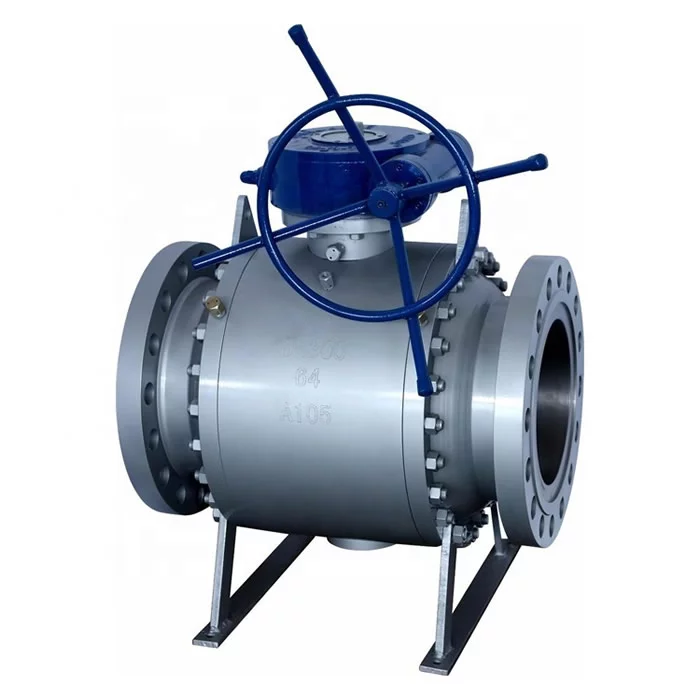
Trunnion Mounted Ball Valve
Features of forged trunnion ball valves are as follows: 1) Anti-fire safe design
A plug valve is a quarter-turn manual valve that uses a cylindrical or tapered plug to permit or prevent straight through flow through the body. The plug has a straight through full port opening. Plug valve can be used in on-off, basic moderate throttling, and diverting services.
The face-to-face standard for plug valves is normally associated with ANSI Standard B16.10. However, many manufacturers have elected to use face-to-face dimensions provided for gate valves so that plug valves can be used as a replacement for gate valve in existing process services.
The most common plug valve design allows for straight through, two way service, with the closure element in the middle of the body. The closure element, which is a plug and a sleeve, is accessible through top entry access in the body and is sealed by a bonnet cap.
In the open position, the passage in the plug lines up with the inlet and outlet ports of the valve. When the closure element is rotated 90° from the open position, the solid part of the plug blocks the flow passage and stops the flow of fluid.
For some corrosive chemical services (such a hydrochloric acid, sulfuric acid etc), plug valve bodies are completely lined with PTFE, PVDF, PVDC, polyethylene, polypropylene or similar coatings.
Plug valves are available in various types as given below:
Advantages
Disadvantages
If you are interested in our products and want to know more details,please leave a message here,we will reply you as soon as we can.